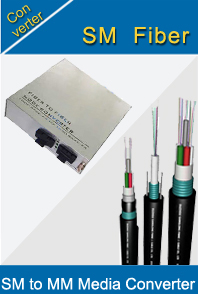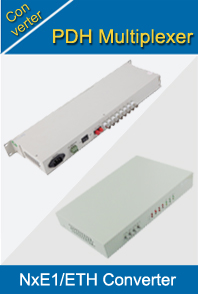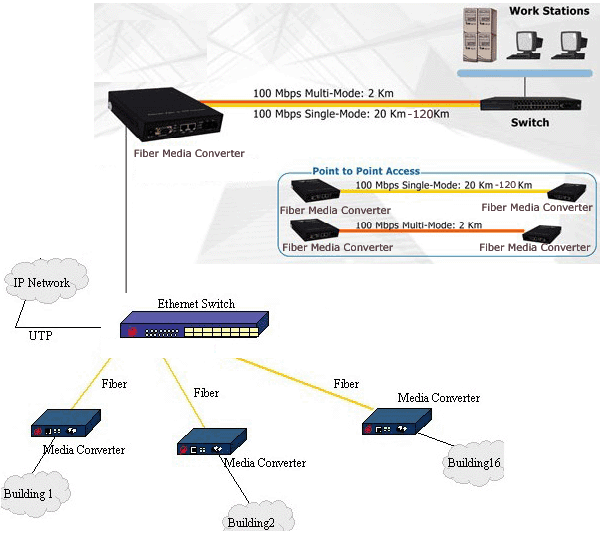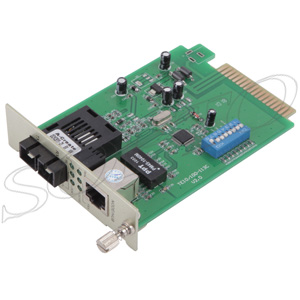-

- Sopto Home
-

- Special Topic
-

- Converter Knowledge
-

- Converting Ethernet from Copper to Fiber and Back
Converter Knowledge
- Form Factors and Application of Ethernet Media Converter
- Ethernet over 4 E1 Converter Brief Introduction
- What is the Difference between RS232 and RS485 Serial Interfaces
- What is the Difference between RS232 and RS485 Serial Interfaces
- How to Convert an Analog Telephone to VoIP Protocol?
- How to Find the Internet Protocol Address and Media Access Contr
- How to Convert from Fast Ethernet to Fiber Optics?
- How to Connect a Fiber Converter?
- How to Convert Ethernet to Fiber Media Converters?
SOPTO Special Topic
Certificate



Guarantee
Except products belongs to Bargain Shop section, all products are warranted by SOPTO only to purchasers for resale or for use in business or original equipment manufacturer, against defects in workmanship or materials under normal use (consumables, normal tear and wear excluded) for one year after date of purchase from SOPTO, unless otherwise stated...
Return Policies
Defective products will be accepted for exchange, at our discretion, within 14 days from receipt. Buyer might be requested to return the defective products to SOPTO for verification or authorized service location, as SOPTO designated, shipping costs prepaid. .....
Applications
An Ethernet to Fiber Media Converter can also be used where there is high level of electromagnetic interference or EMI which is a common phenomenon found in industrial plants. This interference can cause corruption of data over copper-based ethernet links. Data transmitted over fiber optic cable however is completely immune to this type of noise. An Ethernet to Fiber Optic Converter therefore enables you to inter-connect your copper-ethernet devices over fiber ensuring optimal data transmission across the plant floor.
SOPTO Products
- Fiber Optic Transceiver Module
- High Speed Cable
- Fiber Optical Cable
- Fiber Optical Patch Cords
- Splitter CWDM DWDM
- PON Solution
- FTTH Box ODF Closure
- PCI-E Network Card
- Network Cables
- Fiber Optical Adapter
- Fiber Optical Attenuator
- Fiber Media Converter
- PDH Multiplexers
- Protocol Converter
- Digital Video Multiplexer
- Fiber Optical Tools
- Compatible
Related Products
Performance Feature
Converter Knowledge
Recommended


Converting Ethernet from Copper to Fiber and Back
Fiber optic technology is taking the Ethernet networking world by storm. It is faster, completely resistant to EMI/RFI, and offers incredible distances between nodes. But fiber is not quite ready for all LAN applications, and in many cases it makes sense to keep a copper network intact and lay a fiber network over it. So we find a need in our industry for a device that will convert between the fiber optic network and the copper network, seamlessly and without loss of speed. We call these devices Ethernet media converters.
While we've described Ethernet media converters in a previous newsletter, we'll talk now about the different features available in an Ethernet media converter, and how you can select the right one for your application.
Industrial vs. Commercial
The first choice you need to make is whether your Ethernet media converter will be installed in a commercial environment, such as a typical office or clean room, or an industrial environment, which includes places with dust, moisture, temperature variations, vibrations, and other complications. We've gone over the differences between the two in regards to switches before, but the same rules apply for media converters.
It is very important not to confuse the two. While an industrial Ethernet media converter can operate in a commercial environment, it costs more and may not be as easy to put it out of the way. On the other hand, a commercial Ethernet media converter should not be used in an industrial environment as network downtime and system failure can occur.
Single mode vs. Multimode
There are two main "modes" for fiber optic cabling: single mode and multimode. In general, a single mode system is more expensive, but also provides better signal strength over large distances (up to 80km). Multimode is much more affordable and can be used in distances of up to 2km, depending on network speed and bandwidth. Again, don't confuse the two! If you are running multimode cable, you need a multimode Ethernet media converter or a single mode version will not work.
Fiber optic cables have their own unique connector types. There's a good video explaining fiber connectors here. Unlike copper, however, fiber connectors are very difficult to install properly in the field, and there are not a lot of options for converting a connector type with a passive adapter. It is best to match the connector type with the device so they can be easily connected. Remember, Sopto stocks hundreds of factory terminated fiber optic cables off-the-shelf, and can custom manufacture fiber cables without minimum order quantities and with very short lead times, so you don't need to re-terminate or adapt a mismatched cable.
Other Features
Before ordering your media converter, consider things like mounting method (DIN rails, 19" racks or chassis, or just placed on a shelf), network speed (10/100/1000 Mbps), and how you will get power to the unit. A properly installed media converter can both future-proof and provide redundancy for your network for years to come!
Sopto supplies high quality fiber media converters, like 10G Media Converter, PSE Media Converter and so on. For the newest quotes, please contact a Sopto representative by calling 86-755-36946668, or by sending an email to info@sopto.com. For more info, please browse our website.






